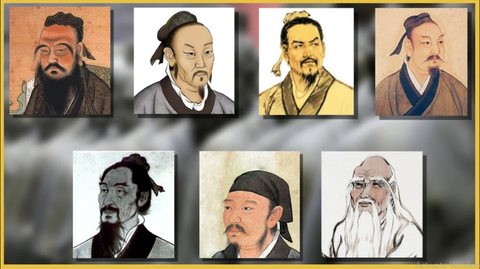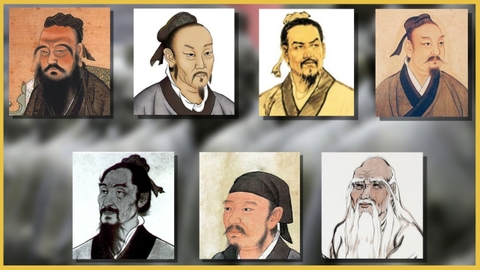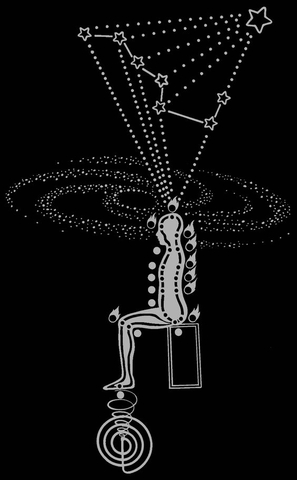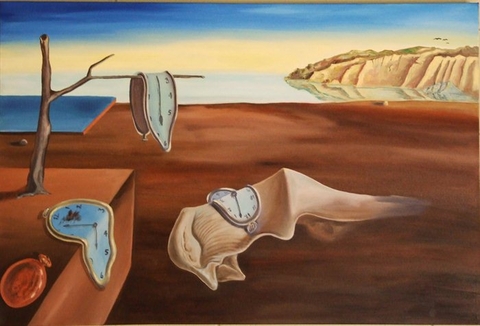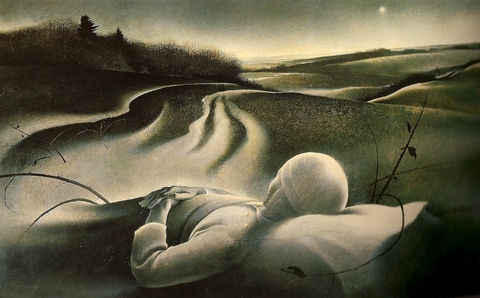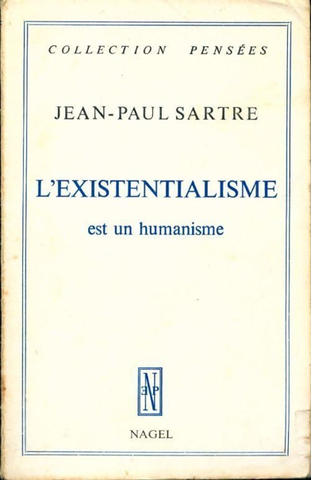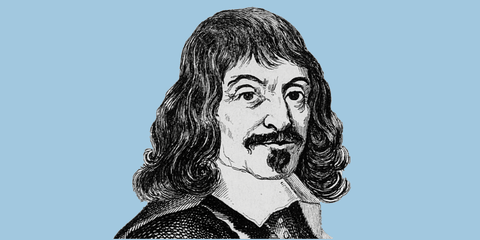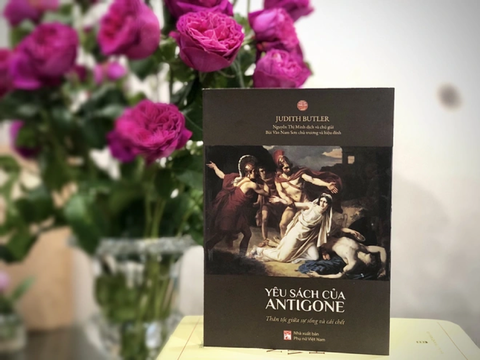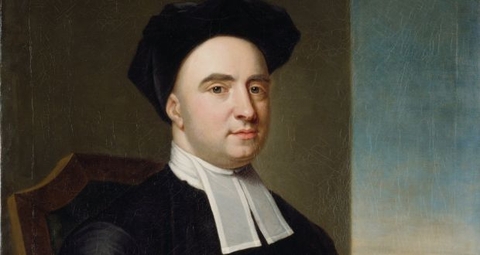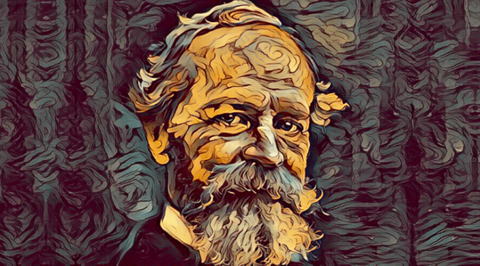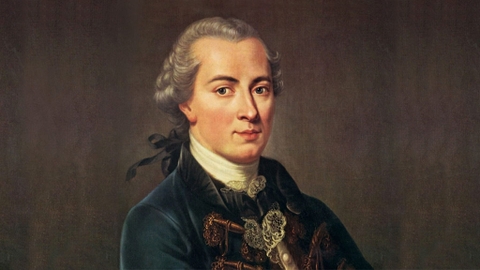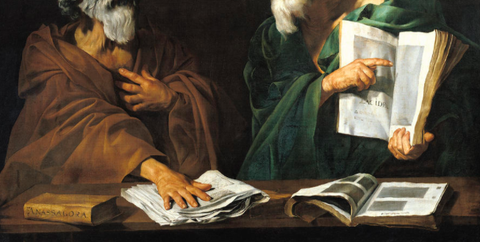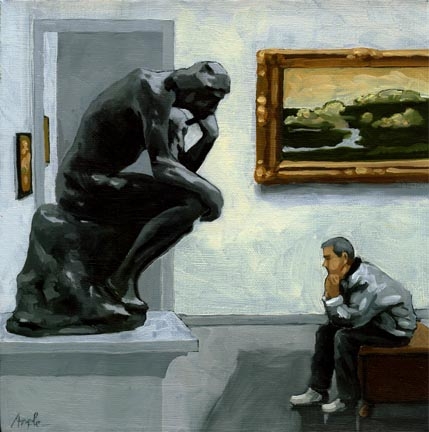This work was first published in 1943 under the name Vom Wesen der Wahrheit. The English version On The Essence of Truth was translated by John Sallis, published in Pathmarks, Cambridge: Cambridge University Press, [1930]1998, pp. 136-137. Ex Libris Hermes will post this edition into 3 parts.

Our topic is the essence of truth. The question regarding the essence of truth is not concerned with whether truth is a truth of practical experience or of economic calculation, the truth of a technical consideration or of political sagacity, or, in particular, a truth of scientific research or of artistic composition, or even the truth of thoughtful reflection or of cultic belief. The question of essence disregards all this and attends to the one thing that in general distinguishes every “truth” as truth.
Yet with this question concerning essence do we not soar too high into the void of generality which deprives all thinking of breath? Does not the extravagance of such questioning bring to light the groundlessness of all philosophy? A radical thinking that turns to what is actual must surely from the first insist bluntly on establishing the actual truth which today gives us a measure and a stand against the confusion of opinions and reckonings. In the face of this actual need what use is the question concerning the essence of truth, this “abstract” question that disregards everything actual? Is not the question of essence the most inessential and superfluous that could be asked?
No one can evade the evident certainty of these considerations. None can lightly neglect their compelling seriousness. But what is it that speaks in these considerations? “Sound” common sense. It harps on the demand for palpable utility and inveighs against knowledge of the essence of beings, which essential knowledge has long been called “philosophy.” Common sense has its own necessity; it asserts its rights with the weapon peculiarly suitable to it, namely, appeal to the “obviousness of its claims and considerations. However, philosophy can never refute common sense, for the latter is deaf to the language of philosophy. Nor may it even wish to do so, since common sense is blind to what philosophy sets before its essential vision.
Moreover, we ourselves remain within the sensibleness of common sense to the extent that we suppose ourselves to be secure in those multiform “truths” of practical experience and action, of research, composition, and belief. We ourselves intensify that resistance which the “obvious” has to every demand made by what is questionable. Therefore even if some questioning concerning truth is necessary, what we then demand is an answer to the question as to where we stand today. We want to know what our situation is today. We call for the goal which should be posited for man in and for his history. We want the actual “truth.” Well then — truth!
But in calling for the actual “truth” we must already know what truth as such means. Or do we know this only by “feeling” and in a general way”? But is not such vague “knowing” and our indifference regarding it more desolate than sheer ignorance of the essence of truth?

1. The Usual Concept of Truth
What do we ordinarily understand by “truth”? This elevated yet at the same time worn and almost dulled word “truth” means what makes a true thing true. What is a true thing? We say, for example, “It is a true joy to cooperate in the accomplishment of this task.” We mean that it is purely and actually a joy. The true is the actual. Accordingly, we speak of true gold in distinction from false. False gold is not actually what it appears to be. It is merely a “semblance” and thus is not actual. What is not actual is taken to be the opposite of the actual. But what merely seems to be gold is nevertheless something actual. Accordingly, we say, more precisely, actual gold is genuine gold. Yet both are “actual,” the circulating counterfeit no less than the genuine gold. What is true about genuine gold thus cannot be demonstrated merely by its actuality. The question recurs: what do “genuine” and “true” mean here? Genuine gold is that actual gold the actuality of which is in accordance [in der Ubereinstimmung steht] with what, always and in advance, we “properly” mean by “gold.” Conversely, wherever we suspect false gold, we say: “Here something is not in accord” [stimmt nicht]. On the other hand, we say of whatever is “as it should be”: “It is in accord.” The matter is in accord [Die Sache stimmt].
However, we call true not only an actual joy, genuine gold, and all beings of such kind, but also and above all we call true or false our statements about beings, which can themselves be genuine or not with regard to their kind, which can be thus or otherwise in their actuality. A statement is true if what it means and says is in accordance with the matter about which the statement is made. Here too we say, “It is in accord.” Now, though, it is not the matter that is in accord but rather the proposition.
The true, whether it be a matter or a proposition, is what accords, the accordant [das Stimmende]. Being true and truth here signify accord, and that in a double sense: on the one hand, the consonance [Einstimmigkeit] of a matter with what is supposed in advance regarding it and, on the other hand, the accordance of what is meant in the statement with the matter.
This dual character of the accord is brought to light by the traditional definition of truth: veritas est adaequatio rei et intellectus. This can be taken to mean: truth is the correspondence [Angleichungl of the matter to knowledge. But it can also be taken as saying: truth is the correspondence of knowledge to the matter. Admittedly, the above definition is usually stated only in the formula veritas est adaequatio intellectus ad rem [truth is the adequation of intellect to thing] Yet truth so conceived, propositional truth, is possible only on the basis of material truth [Sachwahrheit], of adaequatio rei ad intellectum [adequation of thing to intellect ]. Both concepts of the essence of veritas have continually in view a conforming to ... [Sichrichten nach . .]‟ and hence think truth as correctness [Richtigkeit].
Nonetheless, the one is not the mere inversion of the other. On the contrary, in each case intellectus and res are thought differently. In order to recognize this we must trace the usual formula for the ordinary concept of truth back to its most recent (i. e., the medieval) origin. Veritas as adaequatio rei ad intellectum does not imply the later transcendental conception of Kant — possible only on the basis of the subjectivity of man‟s essence — that “objects conform to our knowledge.” Rather, it implies the Christian theological belief that, with respect to what it is and whether it is, a matter, as created (ens creatum), is only insofar as it corresponds to the idea preconceived in the intellectus divinus, i. e., in the mind of God, and thus measures up to the idea (is correct) and in this sense is “true.” The intellectus humanus too is an ens creatum. As a capacity bestowed upon man by God, it must satisfy its idea. But the understanding measures up to the idea only by accomplishing in its propositions the correspondence of what is thought to the matter, which in its turn must be in conformity with the idea. If all beings are “created,” the possibility of the truth of human knowledge is grounded in the fact that matter and proposition measure up to the idea in the same way and therefore are fitted to each other on the basis of the unity of the divine plan of creation.
Veritas as adaequatio rei (creandae) ad intellectum (divinum) guarantees veritas as adaequatio intellectus (humani) ad rem (creatam). Throughout, veritas essentially implies convenientia, the coming of beings themselves, as created, into agreement with the Creator, an “accord” with regard to the way they are determined in the order of creation. But this order, detached from the notion of creation, can also be represented in a general and indefinite way as a world-order. The theologically conceived order of creation is replaced by the capacity of all objects to be planned by means of a worldly reason [Weltvernunft] which supplies the law for itself and thus also claims that its procedure is immediately intelligible (what is considered “logical”). That the essence of propositional truth consists in the correctness of statements needs no further special proof.
Even where an effort is made — with a conspicuous lack of success — to explain how correctness is to occur, it is already presupposed as being the essence of truth. Likewise, material truth always signifies the consonance of something at hand with the "rational" concept of its essence. The impression arises that this definition of the essence of truth is independent of the interpretation of the essence of the Being of all beings, which always includes a corresponding interpretation of the essence of man as the bearer and executor of intellectus. Thus the formula for the essence of truth (veritas est adaequatio intellectus et rei) comes to have its general validity as something immediately evident to everyone. Under the domination of the obviousness which this concept of truth seems to have but which is hardly attended to as regards its essential grounds, it is considered equally obvious that truth has an opposite, and that there is untruth. The untruth of the proposition (incorrectness) is the non-accordance of the statement with the matter. The untruth of the matter (non-genuineness) signifies non-agreement of a being with its essence. In each case untruth is conceived as a non-accord. The latter falls outside the essence of truth. Therefore when it is a question of comprehending the pure essence of truth, untruth, as such an opposite of truth, can be put aside.
But then is there any further need at all for a special unveiling of the essence of truth? Is not the pure essence of truth already adequately represented in the generally accepted concept, which is upset by no theory and is secured by its obviousness? Moreover, if we take the tracing back of propositional truth to material truth to be what in the first instance it shows itself to be, namely a theological explanation, and if we then keep the philosophical definition completely pure of all admixture of theology and limit the concept of truth to propositional truth, then we encounter an old — though not the oldest — tradition of thinking, according to which truth is the accordance (homoiosis) of a statement (logos) with a matter (pragma). What is it about statements that here remains still worthy of question — granted that we know what is meant by accordance of a statement with the matter? Do we know that?
2. The Inner Possibility of Accordance
We speak of accordance in various senses. We say, for example, considering two five-mark coins lying on the table: they are in accordance with one another. They come into accord in the oneness of their outward appearance. Hence they have the latter in common, and thus they are in this regard alike. Furthermore, we speak of accordance whenever, for example, we state regarding one of the five-mark coins: this coin is round. Here the statement is in accordance with the thing. Now the relation obtains, not between thing and thing, but rather between a statement and a thing. But wherein are the thing and the statement supposed to be in accordance, considering that the relata are manifestly different in their outward appearance? The coin is made of metal. The statement is not material at all. The coin is round. The statement has nothing at all spatial about it. With the coin something can be purchased. The statement about it is never a means of payment.
But in spite of all their dissimilarity the above statement, as true, is in accordance with the coin. And according to the usual concept of truth this accord is supposed to be a correspondence. How can what is completely dissimilar, the statement, correspond to the coin? It would have to become the coin and in this way relinquish itself entirely. The statement never succeeds in doing that. The moment it did, it would no longer be able as a statement to be in accordance with the thing. In the correspondence the statement must remain — indeed even first become — what it is. In what does its essence, so thoroughly different from every thing, consist? How is the statement able to correspond to something else, the thing, precisely by persisting in its own essence?
Correspondence here cannot signify a thing-like approximation between dissimilar kinds of things. The essence of the correspondence is determined rather by the kind of relation that obtains between the statement and the thing. As long as this “relation” remains undetermined and is not grounded in its essence, all dispute over the possibility and impossibility, over the nature and degree, of the correspondence loses its way in a void. But the statement regarding the coin relates “itself” to this thing in that it presents [vor-stellt) it and says of the presented how, according to the particular perspective that guides it, it is disposed. What is stated by the presentative statement is said of the presented thing in just such manner as that thing, as presented, is. The “such-as” has to do with the presenting and its presented.
Disregarding all „„psychological‟‟ preconceptions as well as those of any „„theory of consciousness,” to present here means to let the thing stand opposed as object. As thus placed, what stands opposed must traverse an open field of opposedness (Entgegen) and nevertheless must maintain its stand as a thing and show itself as something withstanding [ein Standiges] This appearing of the thing in traversing a field of opposedness takes place within an open region, the openness of which is not first created by the presenting but rather is only entered into and taken over as a domain of relatedness. The relation of the presentative statement to the thing is the accomplishment of that bearing [Verhaltnis] which originally and always comes to prevail as a comportment [Verhalten]. But all comportment is distinguished by the fact that, standing in the open region, it adheres to something opened up as such. What is thus opened up, solely in this strict sense, was experienced early in Western thinking as “what is present” and for a long time has been named “being.”
Comportment stands open to beings. Every open relatedness is a comportment. Man‟s open stance varies depending on the kind of beings and the way of comportment. All working and achieving, all action and calculation, keep within an open region within which beings, with regard to what they are and how they are, can properly take their stand and become capable of being said. This can occur only if beings present themselves along with the presentative statement so that the latter subordinates itself to the directive that it speak of beings such as they are. In following such a directive the statement conforms to beings. Speech that directs itself accordingly is correct (true). What is thus said is the correct (the true). A statement is invested with its correctness by the openness of comportment; for only through the latter can what is opened up really become the standard for the presentative correspondence. Open comportment must let itself be assigned this standard. This means that it must take over a pregiven standard for all presenting. This belongs to the openness of comportment. But if the correctness (truth) of statements becomes possible only through this openness of comportment, then what first makes correctness possible must with more original right be taken as the essence of truth.
Thus the traditional assignment of truth exclusively to staternents as the sole essential locus of truth falls away. Truth does not originally reside in the proposition. But at the same time the question arises of the ground of the inner possibility of the open comportment which pregives a standard, which possibility alone lends to propositional correctness the appearance of fulfilling the essence of truth at all.
3. The Ground of the possibility of Correctness
Whence does the presentative statement receive the directive to conform to the object and to accord by way of correctness? Why is this accord involved in determining the essence of truth? How can something like the accomplishment of a pregiven directedness occur? And how can the initiation into an accord occur? Only if this pregiving has already entered freely into an open region for something opened up which prevails there and which binds every presenting. To free oneself for a binding directedness is possible only by being free for what is opened up in an open region. Such being free points to the heretofore uncomprehended essence of freedom. The openness of comportment as the inner condition of the possibility of correctness is grounded in freedom. The essence of truth is freedom.
But does not this proposition regarding the essence of correctness substitute one obvious item for another? In order to be able to carry out any act, and therefore one of presentative stating and even of according or not according with a “truth,” the actor must of course be free. However, the proposition in question does not really mean that an unconstrained act belongs to the execution of the statement, to its pronouncement and reception; rather, the proposition says that freedom is the essence of truth itself. In this connection „„essence" is understood as the ground of the inner possibility of what is initially and generally admitted as known. Nevertheless, in the concept of freedom we do not think truth, and certainly not at all its essence. The proposition that the essence of truth (correctness of statements) is freedom must consequently seem strange.
To place the essence of truth in freedom — doesn‟t this mean to submit truth to human caprice? Can truth be any more radically undermined than by being surrendered to the arbitrariness of this “wavering reed”? What forced itself upon sound judgment again and again in the previous discussion now all the more clearly comes to light: truth is here driven back to the subjectivity of the human subject. Even if an objectivity is also accessible to this subject, still such objectivity remains along with subjectivity something human and at man‟s disposal.
Certainly deceit and dissimulation, lies and deception, illusion and semblance — in short, all kinds of untruth — are ascribed to man. But of course untruth is also the opposite of truth. For this reason, as the non-essence of truth, it is appropriately excluded from the sphere of the question concerning the pure essence of truth. This human origin of untruth indeed only serves to confirm by contrast the essence of truth “in itself” as holding sway “beyond” man. Metaphysics regards such truth as the imperishable and eternal, which can never be founded on the transitoriness and fragility that belong to man‟s essence. How then can the essence of truth still have its subsistence and its ground in human freedom? Resistance to the proposition that the essence of truth is freedom is based on preconceptions, the most obstinate of which is that freedom is a property of man. The essence of freedom neither needs nor allows any further questioning. Everyone knows what man is.
Read ON THE ESSENCE OF TRUTH - MARTIN HEIDEGGER - translated by JOHN SALLIS - PART II





